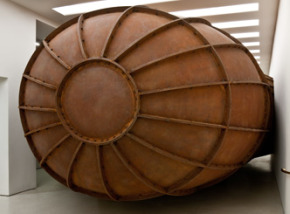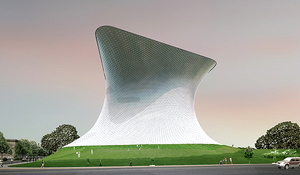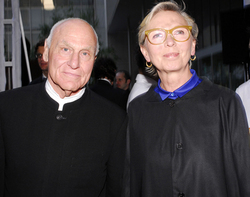 The Solomon R. Guggenheim Museum hit it out of the park in 2009: attendance climbed to 1.3 million, far exceeding the record set in 2008 of 1.1 million. Credit a combination of great exhibits, lots of publicity, the building’s restoration and the museum’s 50th anniversary.
The Solomon R. Guggenheim Museum hit it out of the park in 2009: attendance climbed to 1.3 million, far exceeding the record set in 2008 of 1.1 million. Credit a combination of great exhibits, lots of publicity, the building’s restoration and the museum’s 50th anniversary.
Now for a few details: In mid-year, the Frank Lloyd Wright: From Within Outward, on view from May 15 – August 23, 2009, set a museum record with 409,117 visitors. It didn’t last long. The Kandinsky exhibition, on view from September 18 through this past January 13, attracted 522,015 visitors. (That was 55% above the same period in 2008.) People also bought: The Kandinsky catalogue sold out, with more than 11,000 flying off the shelves, which helped bump up projected retail sales estimates in the store and online by 21.05%.
Both shows were expected to do well, but both surprised the museum by doing much better than projected, deputy director Eleanor Goldhar told me. “It was brilliant curatorial work, plus timing, plus luck,” she says. While expected attendance is always part of the conversation about exhibits, Goldhar says, “We can’t predict what will be a big hit; we are constantly surprised.”
(BTW, Goldhar notes that museum began keeping track of exhibition attendance only in 1992, but she is sure that no other previous exhibit exceeded these totals. Moreover, research shows that the building itself continues to be the museum’s biggest draw.)
 The Anish Kapoor work (detail, left), still on view, is also doing well, and the new restaurant (which I wrote about here), is proving to be a draw, too. What’s more, membership increased.
The Anish Kapoor work (detail, left), still on view, is also doing well, and the new restaurant (which I wrote about here), is proving to be a draw, too. What’s more, membership increased.
Goldhar says she can’t really say how this year’s achievements will affect the director’s or curators’ minds. “Attendance used to be at about 1 million [a year]. Now we can aim higher, but it’s not about the numbers.”
No, it isn’t. But it surely was exciting to see people lined up to see paintings, not motorcycles.
Paris and the Avant-Garde, masterworks from the museum’s permanent collection, is on view now.
Photos: Courtesy Guggenheim Museum



 The play is set in 1958-59, and involves the commission Rothko won for a series of murals from the Four Seasons restaurant. The title stems from this quote: “There is only one thing I fear in life my friend… One day the black will swallow the red.”
The play is set in 1958-59, and involves the commission Rothko won for a series of murals from the Four Seasons restaurant. The title stems from this quote: “There is only one thing I fear in life my friend… One day the black will swallow the red.”